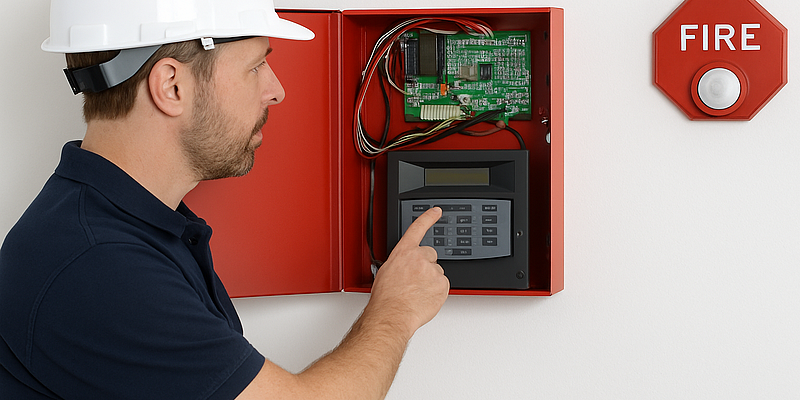-
24 Hour Emergency Service
- 24 Hour Emergency Service
10 Steps to Locate and Program an Unprogrammed Device
Fire alarm systems are critical for safety, but things can get tricky when dealing with unprogrammed devices. These devices, such as smoke detectors, may not have a preset message or label but still sound the alarm in emergencies. In this comprehensive guide, we’ll walk you through 10 simple steps to locate, identify, and program an unprogrammed device on an Edwards Fire Alarm System. Let’s dive in! ????
1. Understand What an Unprogrammed Device Is
An unprogrammed device is one that has been assigned an address by the system but lacks a custom message or label. Despite this, it remains functional and can trigger alarms during emergencies. Your goal is to locate and program it into the system for better identification and functionality.
2. Record the Device Information
Begin by identifying the card and address of the unprogrammed device. This step ensures you know where to start looking within the fire alarm system.
3. Locate the Specific Card
Once you know the card address, find its physical location. It could be on the first or second rail, or within a particular node. Pinpointing this location is critical for accessing the device.
4. Connect to the Card
Using a download cable, connect your laptop to the identified card. Perform this as a single-step connection, focusing only on the relevant card rather than the entire network.
5. Upload the Loop
Navigate to the programming tools and upload the loop from the card. This will reveal all the devices installed on that specific loop, helping you identify the unprogrammed one.
6. Search for the Unprogrammed Device
Use the search tool to locate the device by its address. If it’s unprogrammed, it will appear with just an address and a four-digit serial number. Identify its neighboring devices to triangulate its physical location.
7. Verify the Device’s Location
Record the serial numbers and labels of neighboring devices. This helps you confirm the unprogrammed device’s position within the system, making it easier to trace cables and connections.
8. Assign a Label and Message
Once the unprogrammed device is located, give it a unique label and message. For example, a smoke detector in Room 136 can be labeled “Smoke Detector, Locker Room 136, Above Ceiling.” This ensures accurate identification during emergencies.
9. Compile and Download Changes
Perform a complete database compile and download the updated information to all CPUs and enunciators across the network. This step ensures every panel recognizes the new device and its label.
10. Verify the System
After downloading, map the system to confirm the new device has been integrated successfully. This process keeps both the database and field devices synchronized for optimal performance.
Bonus Tips for Success
Always keep a ladder and tools handy for accessing ceiling-mounted devices.
Double-check neighboring devices to ensure accuracy when mapping the unprogrammed device.
Document all changes for future reference and troubleshooting.
Enhance Your Fire Alarm Expertise
If you’re looking to deepen your knowledge, check out our comprehensive fire alarm training courses. With over 400 NICET exam prep questions and CU credit options, we’re here to help you excel as a technician and even transition into leadership roles. Our mission is to make the fire alarm industry stronger and more efficient for everyone.
Ready to master your fire alarm system? Let us help you become a pro. Comment below with your questions and don’t forget to explore our training center for more expert resources. Together, we’ll make fire safety a top priority!
Join the Fire Alarm Business Blueprint Today!
Contact Secure IT Securities Corp at (888)553-7839 or Download the cheat sheet to learn how to start, grow and operate your own fire alarm and security company.
‹ Back












